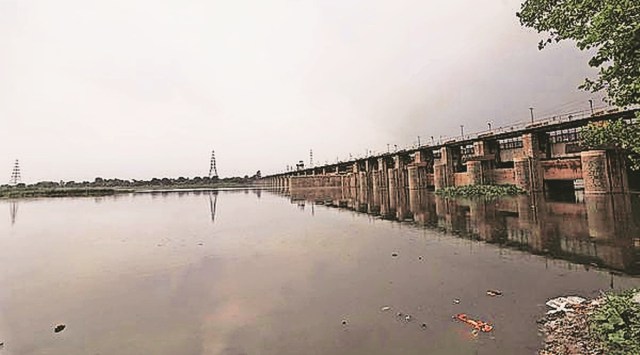Yamuna cleaner than usual but still short of water quality standards
A Delhi Pollution Control Committee (DPCC) report on water quality at eight points of the Yamuna in Delhi based on samples collected on August 3 indicates the presence of dissolved oxygen at all eight points, but less than the desired levels.
 The river also did not meet other parameters related to standards despite increased water flow on account of heavy monsoon rainfall.
The river also did not meet other parameters related to standards despite increased water flow on account of heavy monsoon rainfall. The Yamuna has been cleaner than usual owing to heavy rainfall in the catchment areas and the river being in spate, but still does not meet water quality standards at several points.
A Delhi Pollution Control Committee (DPCC) report on water quality at eight points of the Yamuna in Delhi based on samples collected on August 3 indicates the presence of dissolved oxygen at all eight points, but less than the desired levels.
Reports for previous months show that dissolved oxygen is usually present only at two of the eight points – Palla and Wazirabad – near where the Yamuna enters Delhi, and before the city’s many drains meet the river. In June, for instance, dissolved oxygen was present at Palla and Wazirabad, and in a very small quantity of 0.6 mg/litre at the ITO Bridge. All other sampling points recorded no dissolved oxygen.
 Pic: Tashi Tobgyal
Pic: Tashi Tobgyal
Samples collected earlier this month showed the presence of dissolved oxygen even downstream of Wazirabad. At the ISBT Bridge, 3 mg/litre was recorded, while the level was 4.1 mg/litre at the ITO Bridge, and 2.5 mg/litre at the Nizamuddin Bridge. Further downstream, it declined to 1.8 mg/litre at the Okhla Barrage, down from 11.3 mg/litre at Palla, and 8.2 mg/litre at Wazirabad. The last time that all sampling points recorded dissolved oxygen was in September 2020, according to DPCC data.
Despite improved quality earlier this month, dissolved oxygen levels downstream of Wazirabad still did not meet required standards. Going by Central Pollution Control Board (CPCB) standards, the dissolved oxygen level is required to be 5 mg/litre or more. The city saw its worst floods in 45 years in July when the Yamuna recorded its highest level since 1978 at the Old Railway Bridge.
Ecologist CR Babu said: “The amount of dissolved oxygen is crucial in determining water quality. The more dissolved oxygen there is, greater the activity of living organisms and degradation of pollutants, and cleaner the water.” He added that when sewage is released into the river, oxygen is used in degradation of organic matter, making it difficult for organisms to survive, which is why a polluted river does not have dissolved oxygen.
The river also did not meet other parameters related to standards despite increased water flow on account of heavy monsoon rainfall. The biochemical oxygen demand (BOD) remained above the standard of 3 mg/litre at seven out of eight sampling points but was lower than what was recorded in June. At the Nizamuddin Bridge, for instance, the BOD level was 26 mg/litre, down from 42 mg/litre in June. Similarly, the faecal coliform level was 10,000 MPN/100 ml (most probable number) earlier this month, down from 26,000 MPN/100 ml in June, but still well above the maximum permissible limit of 2,500.
Babu said, “In the lean season when there is a lack of normal river water flow, downstream of Wazirabad, it is no better than sewage. The system does not have a self-purification system, which means that organisms like phytoplankton and zooplankton are not in water. There is no dissolved oxygen.”
“Whereas, in the monsoon, dilution takes place along with enrichment of oxygen. If ecological flow is ensured downstream of Hathnikund even in the lean season, the river can be rejuvenated. Another way is to treat sewage to that level. Once that happens, biotic or living communities like phytoplankton, zooplankton, aquatic plants, fish, and molluscs would come up and self-purification would take place,” he added.







